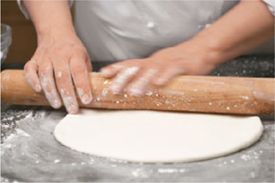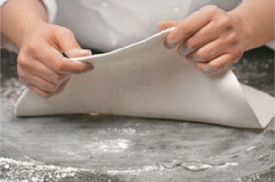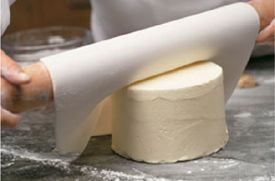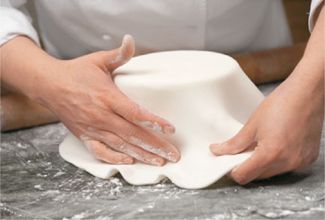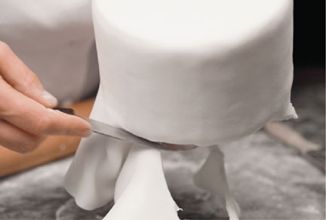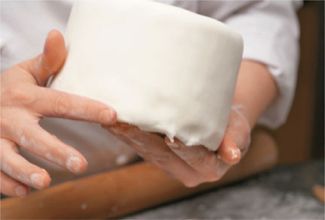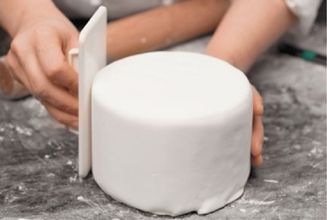Advertisement
Procedure for Covering a Cake with Marzipan or Rolled Fondant
Appears in
You will find that many of the more elegant or elaborate cakes require being covered not with a simple icing or glaze, but with a smooth, refined sheet of marzipan or rolled fondant. The following instructions will help ease the process.
- Cover the cake with a layer (or “crumb coat”) of buttercream—make sure that this layer is very thin; otherwise, the buttercream will spill out from under the sides of the cake. This buttercream layer will help the coating adhere to the cake surface, as well as cover any blotches that might be on it.
- Lightly dust a clean, flat work surface with confectioners’ sugar. Place the marzipan or fondant on the sugared surface and, using a rolling pin, roll it out to a thin, even layer.
- Throughout the process of shaping marzipan or fondant, work quickly and carefully. Both substances dry out very quickly, which will cause cracking and tearing.
- Using a pastry brush, brush off any excess sugar, then carefully roll the marzipan or fondant onto the rolling pin.
- Carefully unroll the marzipan or fondant onto the cake, gently removing any air bubbles beneath the surface. The coating should hang down over the sides of the cake.
- If the marzipan or fondant rips when laying it over the cake or when smoothing it out, push the pieces together and smooth the area with the palm of your hand.
- Using a sharp knife or pastry wheel, cut off any excess marzipan or fondant.
- The coating should now cover the sides of the cake completely, sealing the cake.
- Ragged edges, if any are visible, can be covered with piped decorations or a border, braided rope design, or frieze of leaves made out of marzipan or fondant. On a fondant-covered cake, piped decorations are usually done using royal icing.



